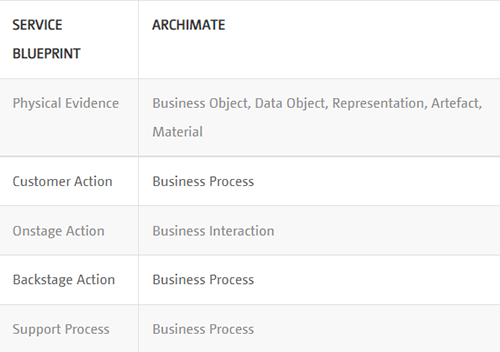A useful technique for service design and innovation is the Service Blueprint. It is related to customer journey maps (see our previous blog) in its emphasis of customer touchpoints, but focuses more on the realization of services by underlying activities and less on the quality of the customer’s experience. A service blueprint provides a layered depiction of a service, showing from top to bottom:
The user and onstage actions are separated by the so-called ‘line of interaction’, the onstage and backstage actions by the ‘line of visibility’, and the backstage actions and support processes by the ‘line of internal interaction’.
Nowadays, given the importance of online experiences, the ‘physical’ evidence and face-to-face nature of visible customer interactions as defined in the original service blueprint are often interpreted more liberally, to include electronic means as well (e.g. email, webpage, social media etc.). A straightforward mapping on ArchiMate concepts is listed in the table below.

A Service Blueprint modeled with ArchiMate is shown below in Figure 1.

Figure 1 – Service Blueprint expressed in ArchiMate
Using techniques such as customer journey maps and service blueprints is a very useful way to design the customer experience of your enterprise. This is a key starting point in any digital transformation.